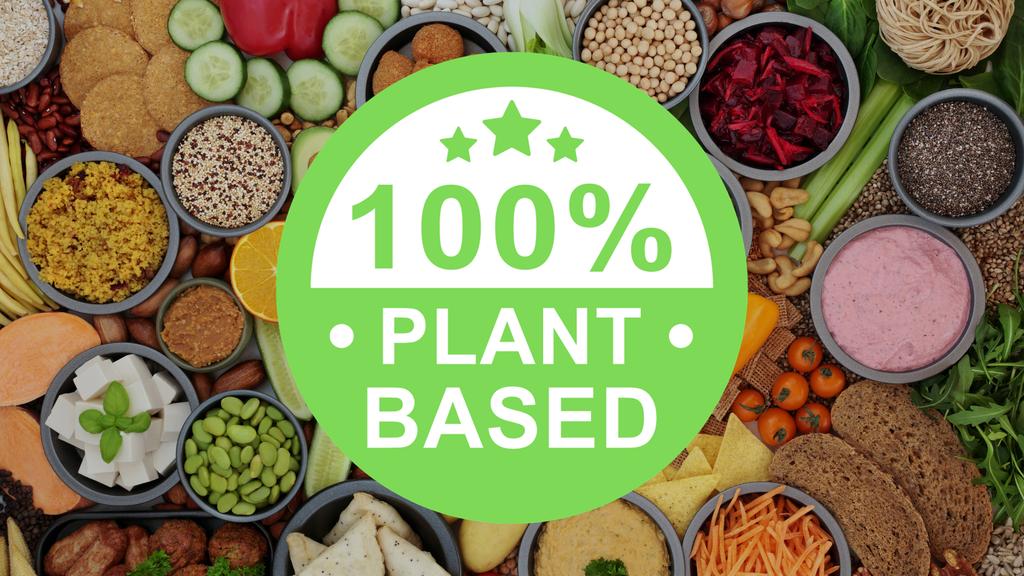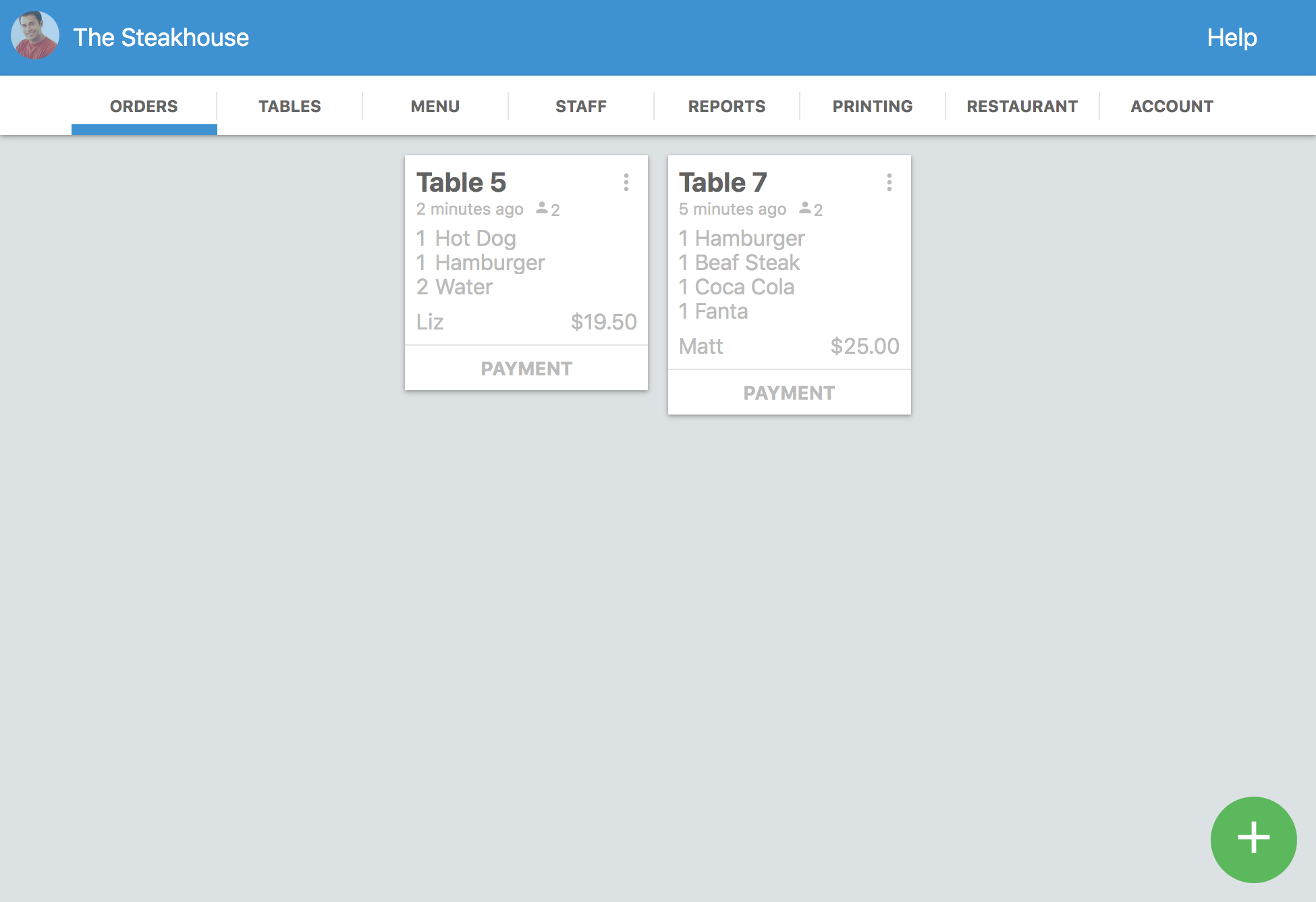As plant-based diets continue to gain popularity, restaurants are being called upon to cater to this growing demand for vegetarian and vegan options. While some restaurant owners may view this as an inconvenience or an unnecessary expense, offering plant-based options on their menu can provide numerous benefits. From increased foot traffic and higher sales to a better reputation and image. In today's socially conscious world, customers are mindful of the impact their food choices have on the environment and animal welfare. In this article, we’ll talk about the following:
- Benefits of offering plant-based food options on your restaurant’s menu
- The different types of plant-based foods you can add to your menu
- How to know if your restaurant would benefit from these options
- And the challenges you might face when adding plant-based foods to your menu
When you finish reading this article, you’ll have all the necessary knowledge to study this new trend and decide whether it’s a good idea to apply it in your restaurant. Keep in mind that not all restaurants will benefit from having those options. Let’s get started!
Benefits of Offering Vegetarian Options on Your Restaurant Menu

There are several benefits directly related to offering plant-based options on your restaurant’s menu. These can range from environmental benefits to reputation benefits and an increased customer base. In this section, we’ll talk about them in depth.
Increased Customer Base and Revenue

This benefit depends much on the availability of restaurants with plant-based options available in your city – however, revenue does generally increase depending on the items you add to your menu. Depending on where you live, restaurants with plant-based food offerings are likely fewer than regular restaurants. That’s because not everyone eats vegetarian, vegan, or any other plant-based diet. If something is true, it’s that this trend is growing in popularity across the world. That’s why jumping in on the action with your plant-based menu can help you attract that segment of customers that are often overlooked. If you have no competition offering vegetarian or vegan options, you can lead the way and gain a whole niche of customers. Of course, this will have a direct impact on your restaurant’s bottom line and it will improve your revenue. Another thing to consider is that, if you stick to simple plant-based foods and use locally sourced ingredients, you can also reduce supply costs.
Health Benefits for Customers
There are several health benefits associated with plant-based eating and your customers will directly enjoy these benefits if you prepare balanced meals for them. That will directly attract more customers interested in having a healthier lifestyle. If you’ve been paying attention to trends in recent years, fitness of all kinds is a good market to appeal to. There’s also a big segment of people who don’t even eat in restaurants due to dietary restrictions related to health issues. Turns out plant-based foods can meet those restrictions, like low-glucose diets, gluten-free diets, and more. That will help you gain customers in a new and untapped market.
Improve Creativity and Innovation in Your Restaurant

Plant-based eating opens a whole new world of culinary possibilities for your restaurant. There are plenty of delicious meals that can be prepared with only natural, healthy, plant-based ingredients. And also, not everything has been done in that department, so your restaurant, specifically your kitchen staff, can lead the way in innovating and developing new recipes to attract environmentally friendly foodies. There’s also no shortage of restaurants that have helped develop new plant-based eating styles, such as vegan fine dining or even vegan fast food. These have been turned into successful restaurant concepts.
Improve Your Restaurant’s Reputation

Several environmental benefits come with sustainable plant-based eating. If your restaurant provides sustainable vegan, vegetarian, and other variations of these options, it will be perceived as a good ethical choice to dine in. Keep in mind that some people prefer plant-based foods due to ethical or even religious reasons. That, paired with a couple of strategies promoting environmental consciousness can help promote your restaurant much more to this specific niche of customers.
Types of Vegetarian Options to Consider Offering
Now that we’ve talked about the benefits, you must also know that plant-based eating has several subsets you can explore with your restaurant. In this section, we’ll talk about the different types of foods and diets you can start adding to your menu.
Vegan Options
Veganism is the ultimate version of plant-based eating. Nothing in this diet comes from animals or affects them in any way. It’s the most environmentally friendly and ethical lifestyle. Even though vegan food delivery services are getting popular, adding vegan options to a regular restaurant can be difficult because it’s hard to justify the whole process inside a kitchen or the prices associated with vegan ingredients. That’s why veganism is usually applied as a concept in restaurants, instead of a few options on the menu.
Vegetarianism and Variants
Vegetarianism is a more forgiving type of diet because it allows for plant-based products that aren’t strictly vegan. There are several variants of vegetarianism, each with its own set of guidelines and restrictions. The most common types of vegetarianism include:
- Lacto-ovo-vegetarian: This type of vegetarianism involves the consumption of dairy products and eggs but excludes meat, poultry, and seafood.
- Lacto-vegetarian: This type of vegetarianism involves the consumption of dairy products but excludes meat, poultry, seafood, and eggs.
- Ovo-vegetarian: This type of vegetarianism involves the consumption of eggs but excludes meat, poultry, seafood, and dairy products.
- Pescatarian: This type of vegetarianism involves the consumption of seafood but excludes meat and poultry.
- Flexitarian: This type of vegetarianism is a more flexible approach that allows for the occasional consumption of meat or poultry while primarily following a vegetarian diet.
Vegetarianism has gained popularity in recent years as more people become aware of the benefits it offers. This one is by far the easiest to apply in restaurants, so it’s the best choice to consider if you’re planning to add a few options to your menu.
Plant-Based Meat Substitutes

Transitioning into vegetarianism or veganism is not easy for some – that’s where meat substitutes come in. There’s a wide variety of meat substitutes available on the market nowadays. There are also substitutes for dairy products such as milk and cheese, which are a big hit among plant-based eating people who didn’t eat that way their whole lives. They provide restaurants with numerous options of dishes that are usually prepared with animal products, but that can be prepared with these substitutes, making them very compatible with a business. For example, meat-substitute lasagna or burgers.
Dietary Restriction Options

Dietary restrictive diets are diets that limit or exclude certain foods or food groups. These diets are often adopted for various reasons such as ethical, environmental, and health concerns. There are several types of dietary restrictive diets, each with its own set of guidelines and restrictions.
- Gluten-free diet: This diet excludes foods that contain gluten, a protein found in wheat, barley, and rye. It is commonly adopted by people with celiac disease, gluten sensitivity, or wheat allergy.
- Dairy-free diet: This diet excludes dairy products such as milk, cheese, and yogurt. It is often adopted by people with lactose intolerance or milk allergy.
- Ketogenic diet: This diet is a high-fat, low-carbohydrate diet that puts the body in a state of ketosis, where it burns fat for fuel instead of carbohydrates. It is often adopted for weight loss or to manage certain medical conditions such as epilepsy. This one is not strictly plant-based, but there can be plant-based keto diets as well.
- Paleo diet: This diet is based on the premise of eating like our ancestors did during the Paleolithic era. It excludes processed foods, grains, and dairy products and emphasizes the consumption of lean proteins, fruits, and vegetables.
- FODMAP diet: This diet excludes foods that are high in fermentable carbohydrates that can cause digestive issues such as bloating and gas. It is often adopted by people with irritable bowel syndrome (IBS).
Applying some of these diets in a restaurant can be difficult without the right knowledge.
How to Know if Plant-Based Options Will Benefit Your Restaurant?

If you are a restaurant owner or manager, you may be considering adding plant-based food options to your menu. Here are some factors to consider when determining if this would be beneficial for your restaurant.
- Demand: it is important to understand the demand for plant-based options in your area. Research local demographics and trends to see if there is a growing interest in plant-based eating. This can be done by looking at social media engagement, local events, and sales data from other restaurants.
- Compatibility with the type of cuisine your restaurant offers: Plant-based options may be more popular in certain types of cuisine, such as Mediterranean or Asian. If your restaurant already offers these types of dishes, adding plant-based options may be a natural fit.
- Study the state of your restaurant: Offering plant-based options can attract a new customer base, including vegetarians, vegans, and those looking to reduce their meat consumption. This can increase loyalty among existing customers and attract new ones. If your restaurant would benefit from that specifically and it needs it, then changing your menu is a great idea.
- Ensure you can prepare good plant-based food: It is also important to ensure that the plant-based options you offer are well-prepared and delicious. This will encourage customers to order these options and recommend them to others.
If there isn't demand, you’ll be offering plant-based meals to no one. If your restaurant is not compatible with plant-based foods, adding them to your menu will be incredibly hard, and ultimately, it won’t generate trust in customers. If you have a steakhouse, offering vegan options won’t cut it! If your restaurant will not benefit from these options, even if there’s demand or if your restaurant is compatible, then adding them is an extra expense you can skip. And finally, if you can’t ensure good food, there’s no point in trying unless you define that before.
Potential Challenges and Drawbacks of Offering Vegetarian Options on Your Restaurant Menu
While adding plant-based options to a restaurant menu can be beneficial, there are also potential challenges and drawbacks to consider.
- Cost of ingredient: Plant-based proteins, such as tofu or tempeh, can be more expensive than traditional meat options. This can impact the overall cost of the dish and potentially turn off some customers.
- Cross-contamination: Separating cooking equipment and preparation areas to avoid cross-contamination with meat products is vital. This can add additional costs and complexity to the kitchen operations.
- Educating customers: Some customers may have limited knowledge or experience with plant-based eating, which can result in hesitation or confusion when ordering these options. This can lead to longer wait times and potential dissatisfaction.
- Not meeting expectations: There is always the risk of not meeting customer expectations with the taste and quality of plant-based options. This can result in negative reviews and a loss of customers.
Of course, with careful planning and execution, you can overcome all of these issues, especially if your restaurant is already compatible with these options. By understanding the needs and preferences of customers, as well as investing in proper training and equipment, you can successfully incorporate plant-based options into your restaurant’s menu.
Plant-Based Food Options Can Boost Your Restaurant’s Growth!
Adding plant-based options to a restaurant's menu can be a challenging and complex process. While there are numerous benefits to offering more plant-based choices, such as meeting the demands of health-conscious and environmentally aware customers, there are also potential drawbacks that must be carefully considered. These include the cost of ingredients, the need for separate cooking equipment, and the risk of negative customer feedback. However, with careful planning and execution, you can successfully incorporate plant-based options. By doing so, you can broaden your customer base and appeal to a wider range of dietary preferences and lifestyles. The key to success lies in finding the balance between traditional menu offerings and innovative plant-based options that satisfy both meat-eaters and plant-based eaters alike. Will you try this in your restaurant?




